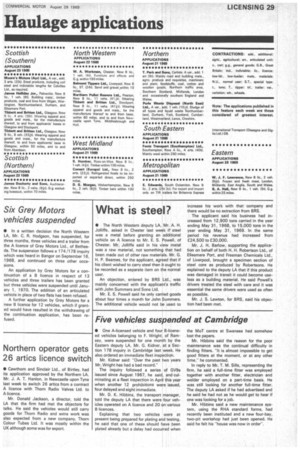What is steel?
Page 31

If you've noticed an error in this article please click here to report it so we can fix it.
• The North Western deputy LA, Mr. A. H. Jolliffe, asked in Chester last week ifsteel was a metal before granting an additional vehicle on A licence to Mr. E. S. Powell, of Chester. Mr. Jolliffe said in his view metal was a raw material, not something that had been made out of other raw materials. Mr. G. H. P. Beames, for the applicant, agreed that if his client wished to carry steel then it ought to be recorded as a separate item on the normal user.
An objection, entered by BRS Ltd., was mainly concerned with the applicant's traffic with John Summers and Sons Ltd.
Mr. E. S. Powell said he only carried goods about four times a month for John Summers. The additional vehicle would not be used to increase his work with that company and there would be no extraction from BRS.
The applicant said his business had increased from 12,900 tons carried in the year ending May 31, 1968, to 15,000 tons in the year ending May 31, 1969. In the same period his revenue had increased from £24,500 to £30,000.
Mr. J. H. Barlow, supporting the application on behalf of both H. H. Robertson Ltd., of Ellesmere Port, and Freeman Chemicals Ltd., of Liverpool, brought a specimen section of steel core as produced by Robertsons. He explained to the deputy LA that if this product was damaged in transit it could become useless as a building material. He said Powell's drivers treated the steel with care and it was essential the same drivers were used as often as possible.
Mr. J. S. Lawton, for BRS, said his objection had been met.




































































































